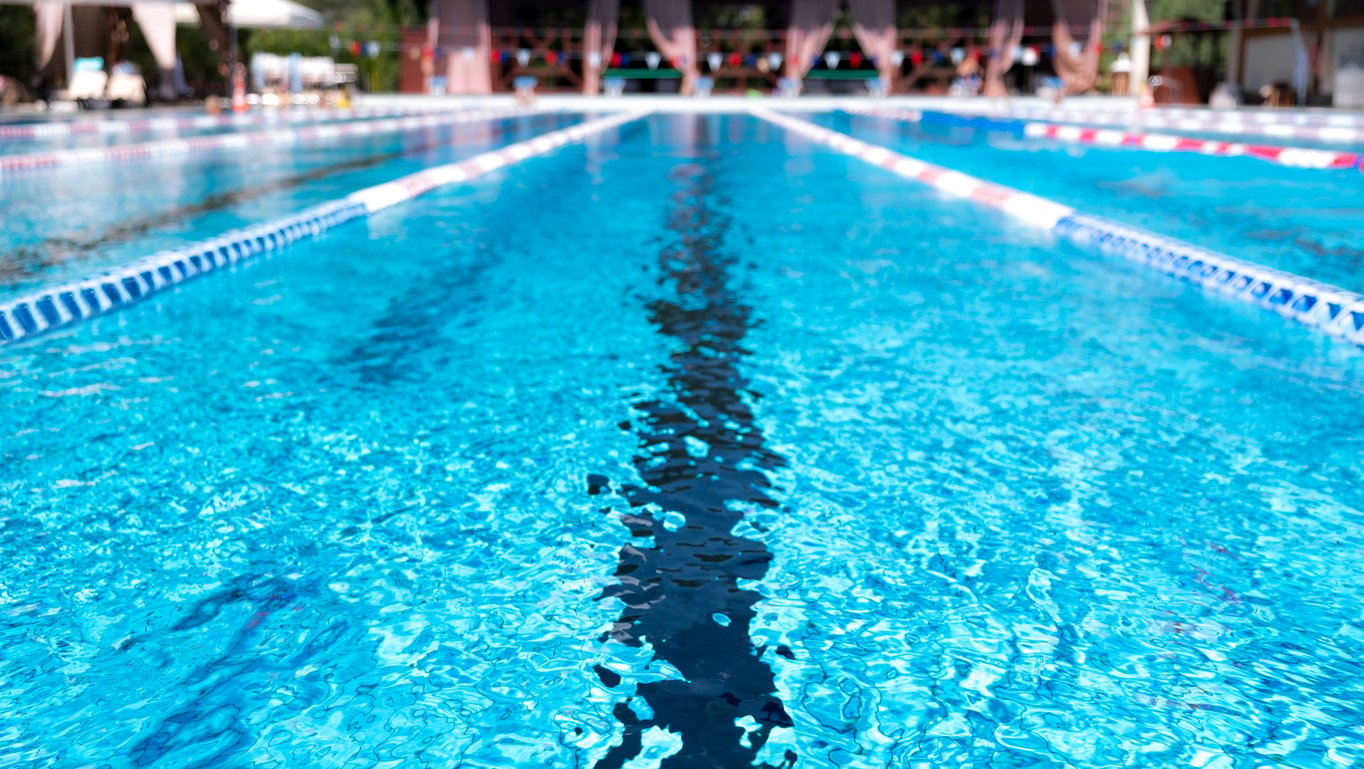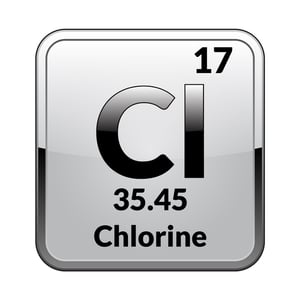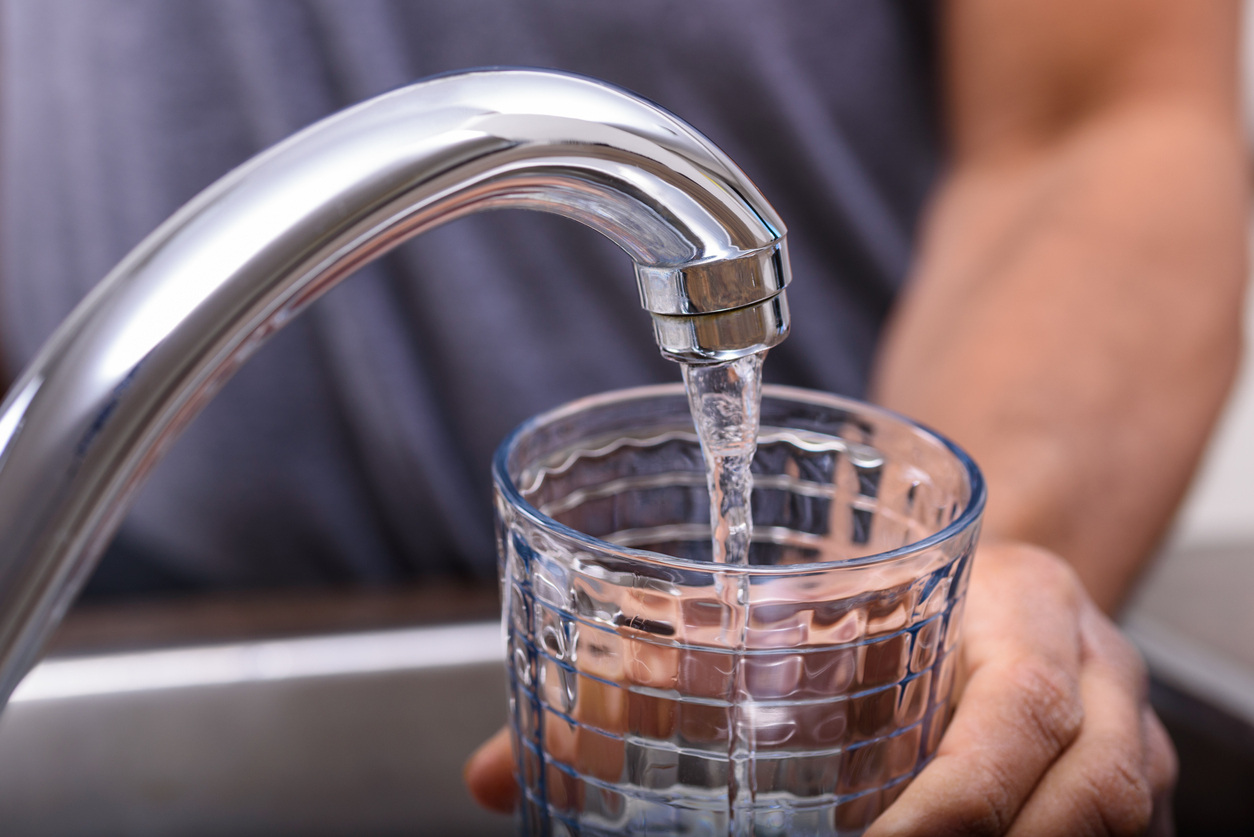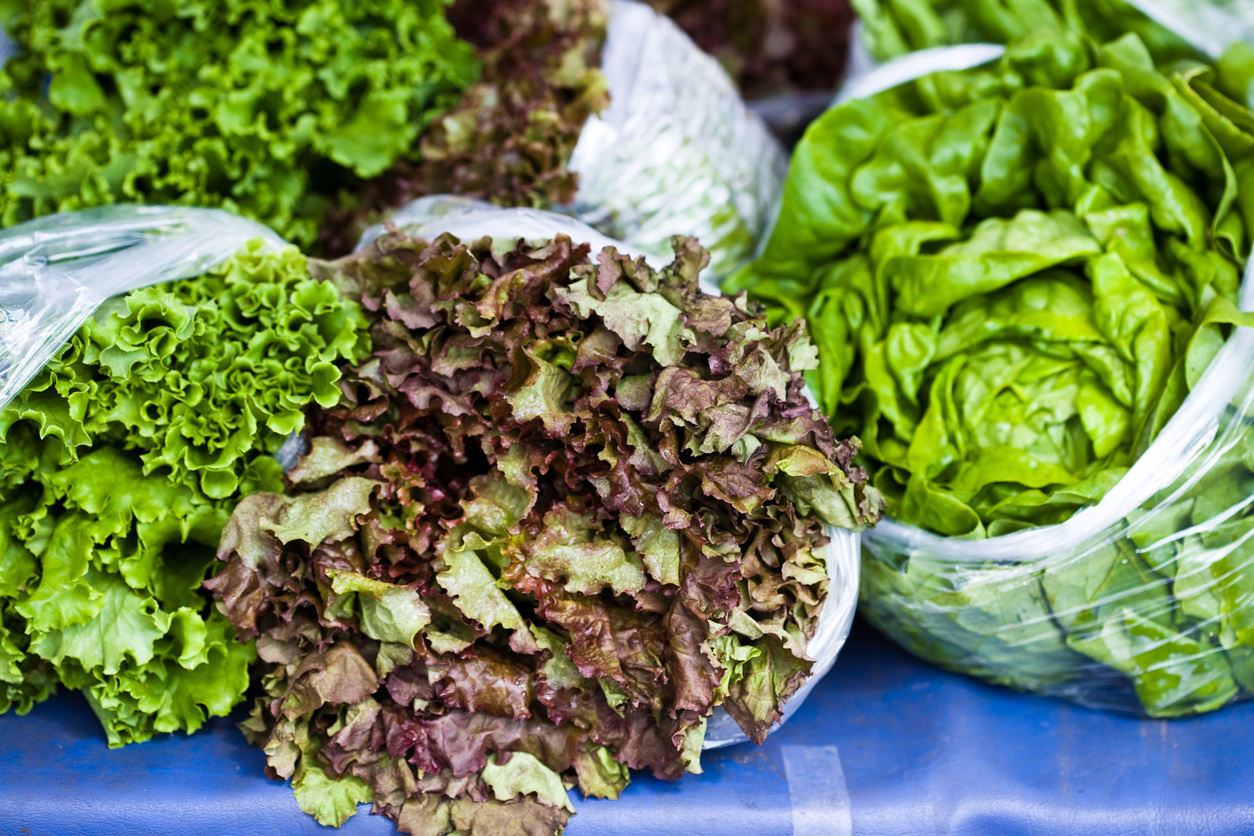Blog Post
Chlorine: More Than Summertime Fun
Mar. 18, 2020

Ah, the simple joys of summer: warm evenings on the back patio with friends, fresh tomatoes on a BLT, and the sweet smell of chlorine after a long afternoon at the local pool—it doesn’t get much better than that. But that pool-perfume we associate with swimming has more applications than just summertime fun. In fact, chlorine is a fascinating chemical, essential to everyday life, and used in the production of everything from life-saving medication to the phone in your hand.
Hold on to your swim caps—let’s dive in.

Photo courtesy of iStock/Natalia Sterleva
A close up of the row of lanes in a swimming pool.
First of all, what is chlorine? Chlorine is made from a simple, white, mineral found on french fries—that’s right, salt (or sodium chloride, as it’s known in the world of science) is where the process begins. Chlorine is produced through a chemical reaction called the “chlor-alkali process,” in which a solution of saltwater (or brine, similar to what you’d use when roasting a turkey) is charged with electricity. The electricity forces the sodium and chloride to separate, resulting in sodium hydroxide, hydrogen, and of course, chlorine.
 Photo courtesy of iStock/ollomy
Photo courtesy of iStock/ollomy
The periodic table element Chlorine.
It might sound simple, but manufacturing chlorine comes with its set of challenges. Salt, for example, is corrosive and hard on equipment, making the brine itself difficult to work with, so chemical factories depend heavily on reliable and durable valves and fittings. Just choosing the right valve can be a challenge, as each part of the process requires a unique set of leak-free fittings. But the biggest challenge manufacturers face has to do with the reaction itself.
The chlor-alkali process produces a side product of hydrogen and hydroxide ions that need to be separated from the other products in order to prevent any further reactions from occurring. Historically, this separation has been accomplished through inefficient—and potentially dangerous—methods. But with new technology, chemical plants are now able to execute the chlor-alkali process using a cutting-edge semi-permeable fabric that allows the ions to be safely separated, making chlorine production easier and more eco-friendly than ever.
After the chlorine is cooled and dried, it is compressed and refrigerated to be stored in its liquid form. Stored in special cylinders, chlorine must be handled with care when it’s in this state, with strict guidelines in place for all personnel who are involved in the handling and transportation of chlorine. It can then be shipped as raw material, ready to be transformed into a wide array of products.
You already know we use it to keep pools healthy, but you may be surprised to learn that chlorine is also used to clean our drinking water. In the U.S., 85 percent of water treatment facilities rely on chlorine to purify our H2O, wiping out deadly pathogens with the power of science. Without it, we’d be brought back to a time when classic plagues like cholera and typhoid would continue to threaten and take lives—not a comforting thought!

Photo courtesy of iStock/sevenstockstudio
Filling a glass with water from a kitchen faucet.
Chlorine saves lives in other ways, too. The medical community uses chlorine chemistry to create everything from medical-grade silicone to prosthetic limbs to pharmaceuticals. It even plays a role in protecting our military and police heroes through bullet-proof vests.
The impacts of chlorine manufacturing don’t stop here. It also plays a huge part in our local, national, and global economy. The chlor-alkali industry directly employs more than 20,000 Americans, with 245,000 employed by chlorine-related industries. Between all of its various applications, it is estimated that chlor-alkali chemistry saves American and Canadian consumers $421.5 billion every year compared to the price of using chlorine substitutes—you can buy a lot of pool passes with those savings.
While most are thrilled with the economic, medical, and health benefits that come through the chlor-alkali process, not everyone is happy about the use of chlorine in daily products—especially when it comes to our food. “Chlorine Chicken” has been in the news a lot recently, particularly in reference to trade deals between the U.S. and the U.K. But what exactly is “chlorine chicken,” should we care, and is it safe to eat?
Chlorine chicken refers to poultry that has been washed in a chlorine solution in order to kill dangerous bacteria, like salmonella and e. Coli. Many processing plants in the U.S. use this method to provide safe food to the American people, but it has been banned in the E.U. since the ’90s, making it illegal for the U.S. to export chicken to Europe. Trade agreements aside, is it safe to eat chlorine chicken? In short, yes.
The FDA and the European Food Safety Authority agree that eating chlorine-treated poultry “would be of no safety concern,” and bagged salads in the U.K. are often cleaned with a chlorine wash. In actuality, the ban on chlorine-washed poultry takes no issue with the chemical itself, but was instituted out of concern for animal welfare—chlorine simply got caught in the crosshairs.

Photo courtesy of iStock/capecodphoto
Several types of bagged lettuce.
Are there any precautions we should take when dealing with chlorine? Yes, of course. Chlorine should never be ingested in a high concentration, like as it’s presented in bleach or other common household cleaning products. It’s also best to wear gloves and ensure proper ventilation when dealing with these products. Aside from that, the general population will rarely come into contact with chlorine in its gaseous state, when it is most volatile and dangerous to humans.
Scientific advancements continue to improve the chlor-alkali process, making it safe to say that the future is bright for chlorine. In May of 2019, a brand-new water recycling facility was opened in the middle of the Marcellus Shale, Pennsylvania. Able to purify more than 18,000 barrels of water every day, the recycling facility will provide a salt-water brine for the fracking operation already at work in that region, reducing fresh-water waste and its negative impact on the environment.
From simply keeping our pools healthy and providing us with bacteria-free food, to giving us clean drinking water and protecting soldiers in the line of duty, the chlor-alkali process impacts nearly every aspect of our lives—even if we don’t realize it. The next time you go for a dip, notice that faint hint of chlorine and remember all the ways that tiny chemical contributes to our health, food, and overall quality of life.
Dixon is proud to count chlorine plants among our customers. We enjoy working together to provide safe solutions that benefit our communities. Take a look at our chemical processing and transfer solutions, and let us know if you like what you see.
If you’d like to learn more about the chemistry behind this process, visit http://www.essentialchemicalindustry.org/chemicals/chlorine.html
Do you have additional questions? 